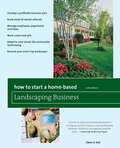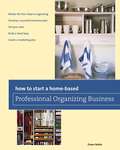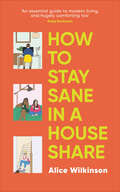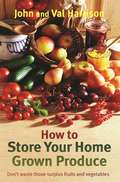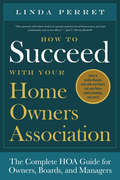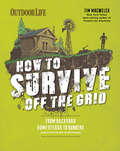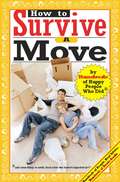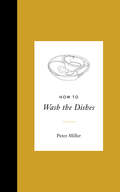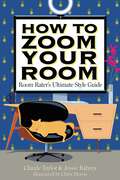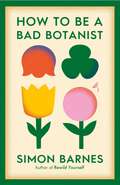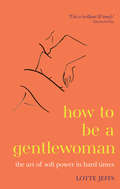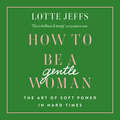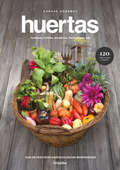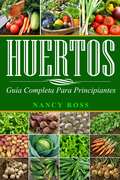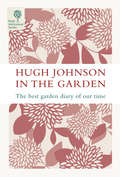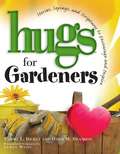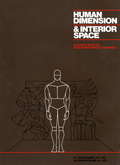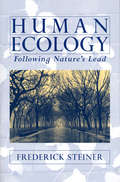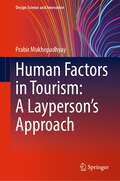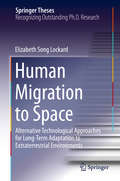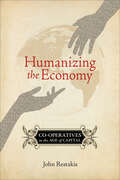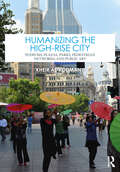- Table View
- List View
How to Start a Home-Based Landscaping Business: *Develop a profitable business plan *Build word-of-mouth referrals *Handle employees, paperwork, and taxes *Work smart and safe *Adapt to new trends like sustainable landscaping *Become your area's top landscaper (Home-Based Business Series)
by Owen E. DellMaking money doing lawn-care, landscape architecture, and garden work is a dream of many people—and this guide contains all the necessary tools and strategies they need to successfully launch and develop their own business doing so. This sixth edition also features advice on marketing and selling one&’s services within &“sustainable landscaping,&” one of the hottest new trends in the field.* Develop a profitable business plan * Build word-of-mouth referrals * Handle employees, paperwork, and taxes * Work smart and safe * Adapt to new trends like sustainable landscaping * Become your area&’s top landscaper
How to Start a Home-based Professional Organizing Business (Home-Based Business Series)
by Dawn NobleFrom estimating start-up costs and finding clients to how to stay profitable even in slow economic climates, this book takes you through every aspect of setting up and running a thriving home-based professional organizing business. Whether you&’re just starting to explore your options for a home-based business or are an organizing wizard looking to be your own boss, each chapter will guide you on how to build your own successful organizing business. Look for useful charts and worksheets throughout the book, including:Start-Up Costs ChecklistClient Intake FormAssessment Visit/Working AgreementSample InvoiceMarketing Plan Worksheet
How to Stay Sane in a House Share
by Alice Wilkinson“A brilliantly researched and compelling read.” - Emma Reed Turrell 'An essential guide to modern living' - Daisy Buchanan How do you keep it together when you're living together? If you’ve found yourself asking this question (returning home from a day of winning in the workplace only to realize you've lost the fight for your own living room — again) then it’s likely that you're one of the millions of people living in a house share in the UK, US and beyond. Between marriage rates dwindling and the cost-of-living soaring, house sharing is becoming more and more common – but that doesn’t stop it being one of the most complex living set-ups of the 21st century. Thankfully, journalist and serial house sharer, Alice Wilkinson is here to help you stay sane when you're feeling stuck. This is the ultimate handbook for house sharers. From how to choose the right housemate to navigating conflict when it (inevitably) arises, Alice draws on interviews with experts and case studies to explore the anxieties that run the lives of young professionals living in house shares and how to navigate them to create a more harmonious home life.
How to Store Your Home Grown Produce
by John Harrison Val HarrisonIt's wonderful to grow your own fruit and vegetables but what do you do when it all ripens at once? How do you cope with the glut which threatens to overwhelm you?Will help all those who grow their own fruit and vegetables to store their produce properly so that it will last for months and feed the family when the garden's bare.Easy and practical advice on how to bottle, dry, freeze and even salt home grown fruit and vegetables.Discover the taste of your delicious homemade jams, chutneys and ketchups.John and Val Harrison reveal just what you can do with that bountiful harvest and share their 30 years' experience of growing fruit and vegetables and you'll never waste another tomato or courgette again.Praise for John Harrison:'Britain's greatest allotment authority'. Indpendent on Sunday.
How to Store Your Home Grown Produce
by John Harrison Val HarrisonIt's wonderful to grow your own fruit and vegetables but what do you do when it all ripens at once? How do you cope with the glut which threatens to overwhelm you?Will help all those who grow their own fruit and vegetables to store their produce properly so that it will last for months and feed the family when the garden's bare.Easy and practical advice on how to bottle, dry, freeze and even salt home grown fruit and vegetables.Discover the taste of your delicious homemade jams, chutneys and ketchups.John and Val Harrison reveal just what you can do with that bountiful harvest and share their 30 years' experience of growing fruit and vegetables and you'll never waste another tomato or courgette again.Praise for John Harrison:'Britain's greatest allotment authority'. Indpendent on Sunday.
How to Succeed with Your Homeowner's Association: The Complete HOA Guide for Owners, Boards, and Managers
by Linda M. PerretHow to Succeed with Your Homeowner’s Association is the all-inclusive handbook to help new homeowners transition into peaceful community living. This comprehensive guide explains the ins and outs of an HOA, from the structure and responsibilities to resolving disputes. Author and veteran HOA recording secretary Linda Perret doesn’t take sides—the association against the homeowner or vice versa—but rather explains how both sides are really working toward the same ultimate goal: a beautiful, peaceful neighborhood.This book answers frequently asked questions like:What is an HOA?What are the responsibilities of the homewoner?Who is the board and what do they do? What can I expect from management?How to handle disputes with the board, management, and neighbors?Perret brings over twenty years of experience working for and with various property management companies and HOA members to the table in this complete guidebook for new homeowners and HOA members alike.
How to Survive Off the Grid: From Backyard Homesteads to Bunkers (and Everything in Between) (Outdoor Life)
by Tim MacWelchThe survival expert and New York Times bestselling author of Prepare for Anything offers a comprehensive, practical guide to self-reliant living. Whether you want to &“go green&” or live the life of a modern-day pioneer, survival expert Tim MacWelch teaches you the knowledge and skills you need in order to unplug successfully. Written from a hands-on perspective, this guide covers everything from raising chickens in your urban backyard to going totally off the grid in your solar-powered log cabin. A guide for the modern homesteader, How to Survive off the Grid contains essential information on energy efficiency, finding and pumping your own water, being your own doctor, keeping chickens, goats, bees, and other critters, and much more.
How to Survive a Move
by Jamie Allen Kazz RegelmanIf you are one of the forty million Americans who will move this year, you know the task can seem overwhelming. Now, there's help. How to Survive A Move offers hundreds of helpful and entertaining stories on moving from the real "pros"- everyday people who have moved (many of them over a dozen times!) and survived to tell their stories.Unlike other moving books that give the opinion of one or two experts, How to Survive a Move includes words of wisdom from hundreds of people - both singles and families, nationwide - who have "been there, done that." Millions of people have survived moving, and so can you!
How to Wash the Dishes
by Peter MillerFind order and beauty in the kitchen with this delightfully elegant primer on washing the dishes that elevates and illuminates a seemingly routine chore.Washing the dishes is an ordinary, everyday task--but with examination and care, it can become much more. In this reverent guide to the household chore, Peter Miller shows us how washing dishes can become a joy, a delight, a meditative exercise, and an act of grace and rhythm.We pay so much attention to recipes but little attention to maintenance and cleanup. Washing the dishes is as much a part of making a meal as prepping the vegetables, making the sauces, or seasoning the meats. At times it is quite routine, sometimes raucous, other times complex. It is never convenient. Despite its din and clatter, and despite its reputation, washing the dishes is the coda to the meal. It is a bustling musical of water and soap, of flow and surface, and done well, the fragile shall sit as proudly as the cast-iron.There are some who do the dishes for the clarity and privacy of it, and there are some who relish the quiet isolation of putting things in order where they belong. There are some who feel the time and movement is a kind of digestive. In the evening in particular, there is a silence when it is all done. How to Wash the Dishes brings elegance, art, and a bit of mindfulness to the sink. It is the perfect gift for those who love to clean and equally as apt for those we wish would clean a bit more.
How to Window Box: Small-space Plants To Grow Indoors Or Out
by Chantal Aida Gordon Ryan BenoitFrom the founders of the popular gardening blog The Horticult comes a guide to the window box, the container garden that is by far the most accessible garden for any skill level, space, or quality of light. The sixteen indoor and outdoor projects range from succulents to veggies and showcase a variety of full sun- and shade-loving foliage. Bright photography and a thorough introduction to soil, watering, and plants make this great for anyone who's green to gardening.This easy gardening book shows renters and homeowners alike how they can own just a few square feet of green no matter where they live. Also included are information on choosing a window box (and instructions for building one from scratch), soil and drainage tips, and ideas for minimizing mess indoors.
How to Zoom Your Room: Room Rater's Ultimate Style Guide
by Claude Taylor Jessie BahreyThe ultimate users' guide to curating your Zoom background from Room Raters, Twitter's foremost experts in on-screen décor. From the virtual office aficionados and Twitter superstars who brought the world the dreaded embarrassment of &“cord violations,&” comes a fun, informative guide for everyone who now finds themselves having to endure the endless onslaught of digital meetings and calls. Packed with beautiful how-to illustrations that demonstrate visually stunning set-ups and tips from celebrity zoom rooms, Room Rater packs an amusing punch while offering advice on how to up your game and not be embarrassed by your surroundings. Included in the book are examples from TV host Jonathan Capehart, former Obama advisor Valerie Jarrett, Senator Mazie Hirono, historian Michael Beschloss who takes readers on a tour of historic presidential rooms, and many more. Chockfull of practical advice that speaks directly to the home office user, the book offers guidance on how to create good lighting, use the perfect camera angle, get rid of clutter, add aesthetically pleasing touches, and avoid appearing as if you are in a hostage video. Whether we like it or not, the remote workplace is here to stay and this book serves as an essential guide to navigating that new normal. It&’s a valuable tool for everyone who wants to appear professional, competent, and composed.
How to be a Bad Botanist
by Simon BarnesCan you tell a tomato from a grape? Lawn from an oak tree? Then congratulations - you are a botanist. Self-confessed bad birdwatcher Simon Barnes thought he knew nothing about plants. He didn't object to them: trees are interesting, because birds perch in them; plants are useful as they create habitats and birds live in habitats. But while admiring the tenacity of some sea kale and yellow-horned poppy to thrive on an inhospitable shingle beach, he was struck by a truth - it all begins with plants. In this funny and inspiring book, Simon Barnes tells the story of a lifelong relationship with plants, and the realisation of the fact. Taking us from thinking ourselves ignorant about plants, to gently starting to observe seasons, patterns and places, Barnes guides us on a journey to better observing the beauty and diversity of the natural world. Both a primer on how to appreciate the plants around us and an exploration on how they make our external and interior worlds, How to be a Bad Botanist opens our eyes to the wonders around us. Plants are everywhere, in every part of your life, and you know more than you think.
How to be a Gentlewoman: The Art of Soft Power in Hard Times
by Lotte Jeffs*'This is brilliant and timely' Elizabeth Day'Part memoir, part manual - this is the type of book every modern woman can take something from' GraziaLearn to navigate the harshness of life with soft power. In her debut book, Lotte Jeffs weaves powerful life experience with practical advice and a psychological deep-dive into what truly constitutes an emotionally rich and meaningful existence. She speaks to everyone from agony aunts and archaeologists, to pop stars and novelists, to explore a diverse picture of what it is to truly live life well.How to be a Gentlewoman will teach you how to slow down, lean out, recognize good relationships and let go of the bad, create a space you love, find your people and construct a happy and 'joined up' sense of yourself.The gentle antidote to a brutal world.For fans of Dolly Alderton's Everything I Know About Love and Elizabeth Day's How to Fail.
How to be a Gentlewoman: The Art of Soft Power in Hard Times
by Lotte Jeffs*'This is brilliant and timely' Elizabeth Day'Part memoir, part manual - this is the type of book every modern woman can take something from' GraziaLearn to navigate the harshness of life with soft power. In her debut book, Lotte Jeffs weaves powerful life experience with practical advice and a psychological deep-dive into what truly constitutes an emotionally rich and meaningful existence. She speaks to everyone from agony aunts and archaeologists, to pop stars and novelists, to explore a diverse picture of what it is to truly live life well.How to be a Gentlewoman will teach you how to slow down, lean out, recognize good relationships and let go of the bad, create a space you love, find your people and construct a happy and 'joined up' sense of yourself.The gentle antidote to a brutal world.For fans of Dolly Alderton's Everything I Know About Love and Elizabeth Day's How to Fail.
Huertas: Guía de prácticas agroecológicas biointensivas
by Mauricio PizardUn libro con sistemas, técnicas, explicaciones y consejos sencillos para huertos agroecológicos biointensivos: abonos orgánicos, biopreparados, producción sostenible y buenas prácticas. Huertas reúne todos los saberes en torno a la tierra, los jardines comestibles y los distintos cultivos, tanto para quien se inicia como para quien ya tiene conocimientos avanzados. Un libro con sistemas, técnicas, explicaciones y consejos sencillos para huertos agroecológicos biointensivos: abonos orgánicos, biopreparados, producción sostenible y buenas prácticas.
Huertos: Guía completa para principiantes
by Nancy Ross J. I. Fernandez¿Quieres aprender a cultivar un huerto de frutales espectacular? Si quieres saber cuáles son las mejores opciones en cuanto a verduras que puedes cultivar o aprender a mantenerlas en buenas condiciones durante todo el año, este libro es la ayuda que necesitas. Encontrarás todo esto en el libro: Herramientas adecuadas, huertos caseros, huertos en tu comunidad, pasos para comenzar, las mejores verduras que puedes cultivar, mantenerlas en perfectas condiciones durante todo el año, los beneficios de un huerto y mucho más. Aprenderás a cultivar maíz, judías, tomates, guisantes, pimientos y mas!
Hugh Johnson In The Garden: The Best Garden Diary of Our Time
by Hugh JohnsonTradescant's Diary, a column of garden jottings, first appeared in the RHS magazine, The Garden, in June 1975. Hugh Johnson was its author (in addition to his being Editorial Director of the magazine) and it became a monthly fixture for the RHS's committed gardeners. Hugh's writings are filled with an eclectic mixture of topical, whimsical and humorous anecdotes and are organised to follow a gardener's monthly calendar. Under the name Tradescant's Diary, a name taken from John Tradescant, gardener to Lord Cecil at Hatfield House and to King James I, who was one of the first men to introduce plants from foreign countries to his own garden, Hugh's writings appeared in The Garden from 1975-2006, in Gardens Illustrated in 2007, and in 2008 still appear as monthly blogs through his own website (www.tradsdiary.com).
Hugh Johnson in the Garden: The Best Garden Diary Of Our Time
by Hugh JohnsonTradescant's Diary, a column of garden jottings, first appeared in the RHS magazine, The Garden, in June 1975. Hugh Johnson was its author (in addition to his being Editorial Director of the magazine) and it became a monthly fixture for the RHS's committed gardeners. Hugh's writings are filled with an eclectic mixture of topical, whimsical and humorous anecdotes and are organised to follow a gardener's monthly calendar. Under the name Tradescant's Diary, a name taken from John Tradescant, gardener to Lord Cecil at Hatfield House and to King James I, who was one of the first men to introduce plants from foreign countries to his own garden, Hugh's writings appeared in The Garden from 1975-2006, in Gardens Illustrated in 2007, and in 2008 still appear as monthly blogs through his own website (www.tradsdiary.com).
Hugs for Gardeners
by Tammy L. Bicket Dawn M. BrandonSomeone you know needs a hug today...It may even be you! Whether it's a rose, a sunflower, or a big, fat tomato plant that captures your attention, watching your garden grow is one of the greatest gifts you can give yourself. It brings you back to the important things in life -- connecting with the earth and celebrating God's creation. The pages of this heartwarming book bloom with stories that will delight anyone who loves to be surrounded by nature. Authors Tammy L. Bicket and Dawn M. Brandon are dedicated gardeners who share stories of life as it's experienced around a garden. Inspirational messages bring greater depth to each story and personalized scriptures by LeAnn Weiss express God's desire to see you grow in His love. Uplifting quotes are sure to encourage and bless. It doesn't matter if you're a beginning gardener or a longtime veteran, this beautiful book will delight your soul like the first day of spring!
Human Dimension and Interior Space: A Source Book of Design Reference Standards
by Julius Panero Martin ZelnikThe study of human body measurements on a comparative basis is known as anthropometrics. Its applicability to the design process is seen in the physical fit, or interface, between the human body and the various components of interior space.Human Dimension and Interior Space is the first major anthropometrically based reference book of design standards for use by all those involved with the physical planning and detailing of interiors, including interior designers, architects, furniture designers, builders, industrial designers, and students of design. The use of anthropometric data, although no substitute for good design or sound professional judgment should be viewed as one of the many tools required in the design process. This comprehensive overview of anthropometrics consists of three parts.The first part deals with the theory and application of anthropometrics and includes a special section dealing with physically disabled and elderly people. It provides the designer with the fundamentals of anthropometrics and a basic understanding of how interior design standards are established. The second part contains easy-to-read, illustrated anthropometric tables, which provide the most current data available on human body size, organized by age and percentile groupings. Also included is data relative to the range of joint motion and body sizes of children. The third part contains hundreds of dimensioned drawings, illustrating in plan and section the proper anthropometrically based relationship between user and space. The types of spaces range from residential and commercial to recreational and institutional, and all dimensions include metric conversions.In the Epilogue, the authors challenge the interior design profession, the building industry, and the furniture manufacturer to seriously explore the problem of adjustability in design. They expose the fallacy of designing to accommodate the so-called average man, who, in fact, does not exist. Using government data, including studies prepared by Dr. Howard Stoudt, Dr. Albert Damon, and Dr. Ross McFarland, formerly of the Harvard School of Public Health, and Jean Roberts of the U.S. Public Health Service, Panero and Zelnik have devised a system of interior design reference standards, easily understood through a series of charts and situation drawings. With Human Dimension and Interior Space, these standards are now accessible to all designers of interior environments.
Human Ecology: Following Nature's Lead
by Frederick R. Steiner Richard T.T. FormanIn Human Ecology, noted landscape planner Frederick Steiner presents a historical and analytical examination of how humans interact with each other as well as with other organisms and their surroundings.
Human Factors in Tourism: A Layperson's Approach (Design Science and Innovation)
by Prabir MukhopadhyayThe textbook covers the application of human factors in different facets of tourism and hospitality industry. It talks about appropriate ambience creation for guests, so they can enjoy their stay. This book enumerates different human factors aspects of dealing with tourists, conducting guided tours, or ensuring that tourists are completely satisfied from the tour in detail but in a layperson’s language. This book discusses details of the application of human factors in the tourism sector. This book aims to fill the gap between the literature available on tourism that deals with people and human factors that deals with the interaction among people, space, and products. This book aids the students and instructors in understanding and teaching different human factors issues in this sector. Further, this book will help professionals in the industry in providing quality services to their clients.
Human Migration to Space
by Elizabeth Song LockardHuman migration to space will be the most profound catalyst for evolution in the history of humankind, yet this has had little impact on determining our strategies for this next phase of exploration. Habitation in space will require extensive technological interfaces between humans and their alien surroundings and how they are deployed will critically inform the processes of adaptation. As humans begin to spend longer durations in space--eventually establishing permanent outposts on other planets--the scope of technological design considerations must expand beyond the meager requirements for survival to include issues not only of comfort and well‐being, but also of engagement and negotiation with the new planetary environment that will be crucial to our longevity beyond Earth. Approaching this question from an interdisciplinary approach, this dissertation explores how the impact of interior space architecture can meet both the physical and psychological needs of future space colonists and set the stage for humankind to thrive and grow while setting down new roots beyond Earth.
Humanizing the Economy: Co-operatives in the Age of Capital
by John RestakisHow the largest social movement in history is making the world a better place.At the close of the twentieth century, corporate capitalism extended its reach over the globe. While its defenders argue that globalization is the only way forward for modern, democratic societies, the spread of this system is failing to meet even the most basic needs of billions of individuals around the world. Moreover, the entrenchment of this free market system is undermining the foundations of healthy societies, caring communities, and personal wellbeing.Humanizing the Economy shows how co-operative models for economic and social development can create a more equitable, just, and humane future. With over 800 million members in 85 countries and a long history linking economic to social values, the co-operative movement is the most powerful grassroots movement in the world. Its future as an alternative to corporate capitalism is explored through a wide range of real-world examples including:Emilia Romagna's co-operative economy of in Northern ItalyArgentina's recovered factory movementJapan's consumer and health co-operativesHighlighting the hopes and struggles of everyday people seeking to make their world a better place, Humanizing the Economy is essential reading for anyone who cares about the reform of economics, globalization, and social justice.John Restakis has been active in the co-op movement for 15 years. He is the Executive Director of the BC Co-operative Association and has been a consultant for co-op development projects in Africa and Asia. A pioneering researcher on co-operative economies, he writes and lectures on economic democracy and the role of co-operatives in humanizing economies.
Humanizing the High-Rise City: Podiums, Plazas, Parks, Pedestrian Networks, and Public Art
by Kheir Al-KodmanyThe transformative power of urban design in shaping our experiences within high-rise cities takes center stage in Humanizing the High-Rise City: Podiums, Plazas, Parks, Pedestrian Networks, and Public Art. This captivating exploration delves into the art of turning towering skyscraper cities into vibrant havens that foster human connection, celebrate culture, and build communities. Unveiling the secrets behind the creation of urban spaces, from dynamic plazas that encourage social interaction to tranquil parks that infuse life into steel and glass, the book unfolds a narrative that resonates with the innate rhythms of humanity. Examining 20 major high-rise cities worldwide (including Chicago, New York City, Dubai, Shanghai, Hong Kong, and Singapore, among others), synthesizing extensive literature, and enriched with over 200 photographs, this book showcases projects seamlessly weaving nature, art, and connectivity into the urban fabric. These endeavors craft environments that enhance well-being and instill a profound sense of belonging amid the challenges of urban density. As the global landscape increasingly tilts toward vertical living, this book serves as a guiding light, illuminating the path to a heightened and enriched experience of high-rise urban living. This book will be useful to practitioners and students of architecture, urban planning, and urban design interested in improving high-rise cities.
